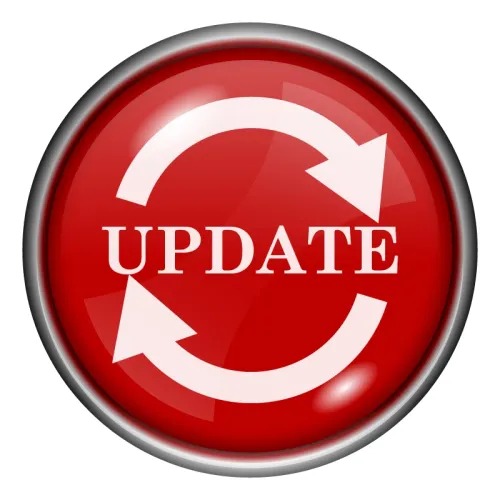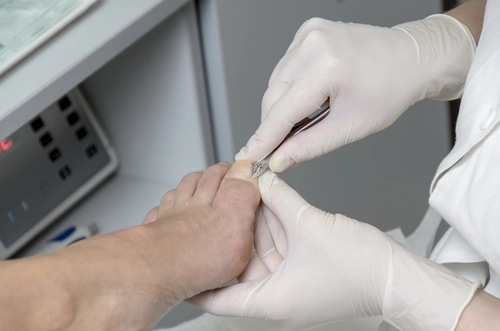Internal Medicine Coding Alert
Check Out Latest CCI Edits to File Cleanest Debridement Claims Possible

Here’s what to do when the debridement code is in Column 1.
The latest version of the Correct Coding Initiative (CCI) took effect October 1, and it has several debridement bundles internal medicine coders need to know.
Why? If your physician performs debridement with another procedure, you need to check out the latest CCI lists. Most of the debridement codes you’re likely to use have been affected by CCI 22.3.
Look at this info on what you need to know to comply with the latest CCI.
Pay Attention to These Edits Involving Debridement Procedures
Many of the codes that you use in internal medicine are included in CCI 22.3 edits. According to these edits, these procedure codes are considered a Column 1 code with each of these debridement procedures:
-
11000 (Debridement of extensive eczematous or infected skin; up to 10% of body surface)
-
11004 (Debridement of skin, subcutaneous tissue, muscle and fascia for necrotizing soft tissue infection; external genitalia and perineum)
-
11005 (…abdominal wall, with or without fascial closure)
-
11042 (Debridement, subcutaneous tissue [includes epidermis and dermis, if performed]; first 20 sq cm or less)
-
11043 (Debridement, muscle and/or fascia [includes epidermis, dermis, and subcutaneous tissue, if performed]; first 20 sq cm or less)
-
11044 (Debridement, bone [includes epidermis, dermis, subcutaneous tissue, muscle and/or fascia, if performed]; first 20 sq cm or less)
-
97597 (Debridement [e.g., high pressure waterjet with/without suction, sharp selective debridement with scissors, scalpel and forceps], open wound, [e.g., fibrin, devitalized epidermis and/or dermis, exudate, debris, biofilm], including topical application[s], wound assessment, use of a whirlpool, when performed and instruction(s) for ongoing care, per session, total wound[s] surface area; first 20 sq cm or less)
-
97602 (Removal of devitalized tissue from wound[s], non-selective debridement, without anesthesia [e.g., wet-to-moist dressings, enzymatic, abrasion], including topical application[s], wound assessment, and instruction[s] for ongoing care, per session).
In addition to the above mentioned codes, the list also includes +11001, +11045, +11046, +11047 and +97598, which are add-on codes to 11000, 11042, 11043, 11044 and 97597, respectively. All these above debridement codes are mostly column 2 codes with most of the codes that you use in internal medicine (including integumentary codes [10040-17250], musculoskeletal range of codes [20005-29999], and removal procedural codes of the external ear [69200-69210]).
“These edits are generally consistent with Current Procedural Terminology (CPT®) guidance regarding reporting of debridement,” says Kent Moore, senior strategist for physician payment at the American Academy of Family Physicians. “Debridement is generally understood to be part of a more extensive procedure when that procedure is reported. For instance, CPT® guidelines preceding the integumentary repair codes (12001-13160) indicate that debridement is part of such services. Those guidelines specifically state, ‘Debridement is considered a separate procedure only when gross contamination requires prolonged cleansing, when appreciable amounts of devitalized or contaminated tissue are removed, or when debridement is carried out separately without immediate primary closure,’” Moore adds.
Modifier indicator: Each of these above mentioned edit pairs carries a modifier indicator of “1,” meaning that you might be able to report both codes in an edit pair if you have sufficient documentation to support separate coding. “The edit can be overcome, if appropriate, with the use of modifier 59 (Distinct procedural service),” says Mary I. Falbo, MBA, CPC, CEO of Millennium Healthcare Consulting, Inc. in Lansdale, PA. If so, you should append a modifier to the Column 2 code.
Understand When Edits Are Reversed
Although, in most instances, the debridement codes are Column 2 codes in the edit bundle with the codes you use in internal medicine, you can find these codes in Column 1 in some of the edits.
You will need to be aware when these debridement codes are Column 1 codes. While in most instances, these codes are Column 2 codes, they are Column 1 codes along with these below mentioned codes:
-
Body and upper extremity cast application codes (29000-29086)
-
Body and upper extremity splint application codes (29105-29131)
-
Body and upper extremity strapping codes (29200-29280)
-
Lower extremity cast application codes (29305-29450)
-
Lower extremity splint application codes (29505-29515)
-
Lower extremity strapping codes (29520-29584).
Modifier indicator: As with debridement codes in Column 2 mentioned earlier, these edits with cast, splint and strapping codes also carry the modifier indicator ‘1.’ You can report these above mentioned Column 2 codes separately if you append a suitable modifier such as 59 with these codes. Since the debridement codes are Column 1 codes for these edit bundles, you will report these codes without the use of a modifier.
Example: Your internist reviews a 25-year-old male patient who presents to your practice with injuries sustained in a skateboarding incident. The evaluation revealed the patient had a fractured left elbow and multiple injuries on the left upper arm and left knee. Your clinician decided to place a long arm splint to stabilize the fractured elbow until an orthopedist could treat it later. Since the wounds had gravel in them, your clinician then debrided the wounds on the arm and legs. This debridement mostly involved the skin and included some portion of the subcutaneous tissues. The total area was less than 20 square centimeters. Your internist then placed a topical antibiotic and dressed the wounds.
What to report: In this scenario, your clinician performed placement of the long arm splint and debridement of wounds of the arm and the knee. So, you will report the following codes:
-
11042 to report the wound debridement
-
29105 (Application of long arm splint [shoulder to hand]) with modifier 59 appended to indicate this »» was distinct from the debridement, which involved the legs as well as the arm
-
the appropriate level E/M code with modifier 25 (Significant, separately identifiable evaluation and management service by the same physician or other qualified health care professional on the same day of the procedure or other service) appended to indicate that the physician did the work of evaluation and management above and beyond that which is usually included in the procedures
-
S41.122A (Laceration with foreign body of left upper arm, initial encounter) and S81.022A (Laceration with foreign body, left knee, initial encounter) appended to 11042 to represent the patient’s injuries
-
S42.402A (Unspecified fracture of lower end of left humerus, initial encounter for closed fracture) appended to 29105 to represent the patient’s fracture
-
Y93.51 (Activity, roller skating [inline] and skateboarding) appended to 11042, 29105, and the E/M to represent the cause of the patient’s injuries.
Resources: If you have not already availed yourself of the latest CCI edits, you can find them on the Centers for Medicare & Medicaid Services web site at https://www.cms.gov/Medicare/Coding/NationalCorrectCodInitEd/index.html?redirect=/nationalcorrectcodinited/.
Related Articles
Internal Medicine Coding Alert
- CCI Update:
Check Out Latest CCI Edits to File Cleanest Debridement Claims Possible
Here’s what to do when the debridement code is in Column 1. The latest version [...] - E/M Coding:
Use These Tips for Top-Notch Prolonged Services Reporting
Remember to keep indirect, face-to-face care separate. If your internist performs an evaluation and management [...] - CPT® Coding:
Stay Cool With This Spot-On Burn Coding Advice
Experts: Diagnosis codes vital to burn treatment claims. When your internist performs burn treatment, coders [...] - You Be the Coder:
Clearing Cerumen for Ear Exam
Question: Our internist performed removal of cerumen by irrigating the ears of a patient to examine [...] - Reader Question:
Most Ages Fall Under This Feeding Difficulties Dx
Question: If our physician reported “feeding difficulties,” what code should I report? Are there any age [...] - Reader Question:
Contact Payer to Nail Down Sports Physicals Coding
Question: I am new to internal medicine coding, and I was looking at reporting sports physicals [...]




